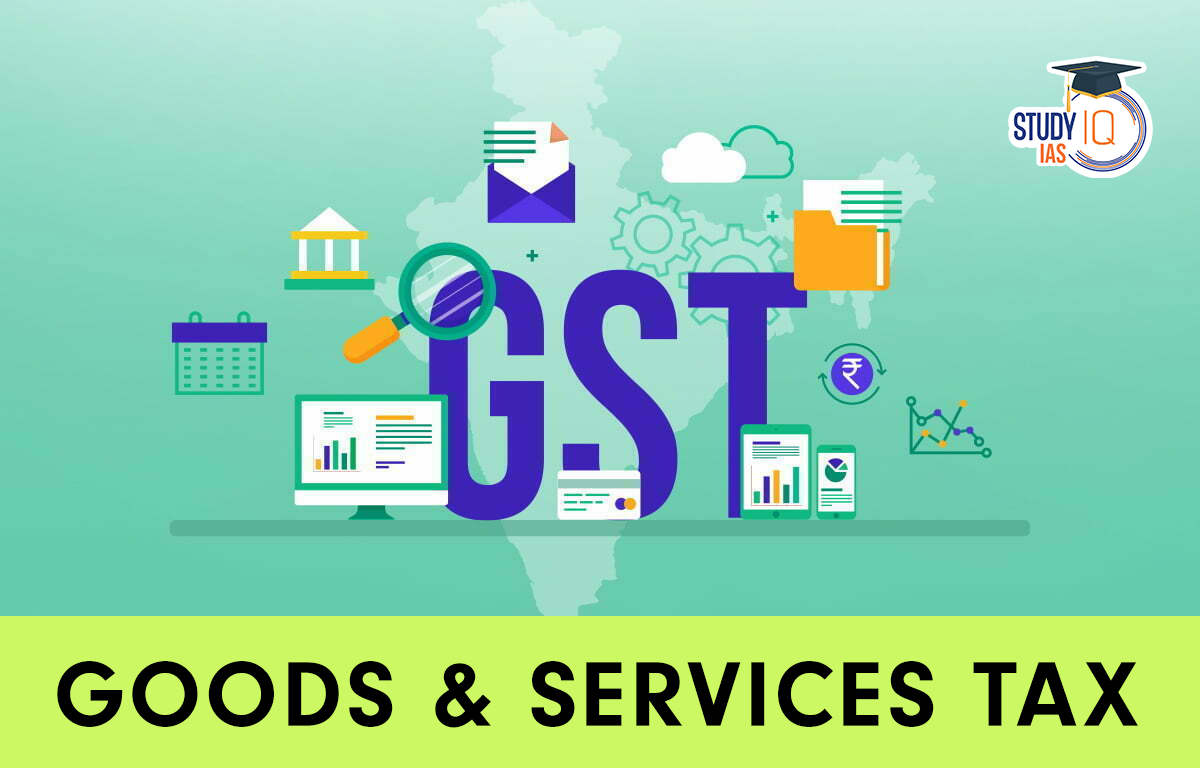Table of Contents
India celebrates the eighth anniversary of the Goods and Services Tax (GST) on July 1, 2025, marking a significant moment in the country’s economic and taxation history. Since its implementation in 2017, GST has redefined how businesses operate, how goods move across state borders, and how consumers interact with tax regimes. The year 2024–25 has been a record-breaking year for GST with unprecedented collections and industry-wide approval.
Eight Years of GST: Record ₹22.08 Lakh Crore Collection in 2024–25
As the Goods and Services Tax (GST) completes eight years on July 1, 2025, India celebrates a significant economic milestone. In 2024–25, GST collections reached a record ₹22.08 lakh crore, marking a 9.4% year-on-year growth. The number of active GST taxpayers has risen to over 1.51 crore, reflecting stronger compliance and formalisation of the economy. A Deloitte survey shows 85% of industry leaders had a positive experience with GST, citing simplified processes, digital compliance, and improved credit flow. GST has eased business operations, reduced logistics costs, and benefited MSMEs and consumers alike. Backed by continued reforms from the GST Council, the unified tax system continues to play a key role in India’s economic transformation.
55th GST Council Meeting Highlights
- Reduction in GST rates on essential items.
- Introduction of GST exemptions for specific categories.
- Changes in tax rates on goods and services.
- Streamlining compliance measures for taxpayers.
| Category | Cheaper / Costlier | GST Rate Change / Clarification |
|---|---|---|
| Fortified Rice Kernel (FRK) | Cheaper | Reduced to 5% |
| Gene Therapy | Cheaper | Full exemption |
| Motor Vehicle Accident Fund | Cheaper | GST-exempt |
| Food Inputs for Government Programs | Cheaper | 5% concessional rate extended |
| Appeals in Penalty Cases | Cheaper | Reduced pre-deposit required |
| Sponsorship Services | Cheaper | Taxed under Forward Charge |
| Old and Used Vehicles | Costlier | Increased to 18% |
| Autoclaved Aerated Concrete Blocks | Costlier | Increased to 12% |
| Ready-to-Eat Popcorn | Costlier | 12% for pre-packaged |
| LRSAM System Equipment | Exempt | IGST exemption extended |
| IAEA Equipment | Exempt | IGST exemption extended |
| Pepper and Raisins | Clarified | Not liable to GST |
| Penal Charges by Banks and NBFCs | Clarified | Not liable to GST |
| Pre-Packaged Goods Definition | Clarified | Includes up to 25 kg or 25 litres |
| Regularisation of Past Issues | Clarified | Resolved on “as is where is” basis |
Goods and Services Tax (GST)
Goods and Services Tax (GST) is an indirect tax system introduced in India on July 1, 2017, which subsumed multiple indirect taxes levied by the central and state governments, such as VAT, excise duty, and service tax. GST is a value-added tax that is levied on the supply of goods and services, from the manufacturer to the consumer and is designed to create a common national market by eliminating barriers to interstate trade.
Goods and Services Tax History
- Initiation (2000): Proposed by Kelkar Task Force on Indirect Taxes to replace complex tax structure.
- Roadmap (2009): The Empowered Committee of State Finance Ministers released the First Discussion Paper.
- Challenges (2011): The Constitution Amendment Bill faced issues, including compensation to States.
- Introduction (2014): Constitution (122nd Amendment) Bill, 2014, introduced, aimed at amending the Constitution for GST implementation.
- Legislative Journey (2015-2016): The Lok Sabha passed the Bill in May 2015; the Rajya Sabha and Lok Sabha passed it in August 2016. President’s assent was received on 8th September 2016, enacted as the 101st Constitution Amendment Act.
- GST Council (2016): Established with the Union Finance Minister and representatives from all States and Union Territories. Notified on 15th September 2016, with the GST Council Secretariat.
- Implementation (July 1, 2017): GST laws implemented, replacing complex Central and State taxes.
- Tax Slabs: Goods and services are categorized into tax slabs – 5%, 12%, 18%, and 28%.
- Exemptions: Some essential commodities are exempted; Gold and job work for diamonds attract lower tax rates.
- Compensation Cess: Levied on demerit goods and certain luxury items.
- Technological Infrastructure: Extensive efforts were made to build GSTN (GST Network), a not-for-profit company, provides an IT backbone for taxpayer registration, return filing, and tax payments.
- Amendments and Refinements: Post-implementation, GST underwent amendments and refinements based on feedback from businesses and economic changes.
Goods and Services Tax Objectives
The main objective of the Goods and Services Tax (GST) in India is to create a unified and simplified tax system, by replacing multiple indirect taxes levied by the central and state governments with a single, comprehensive tax. The introduction of GST aims to achieve the following objectives:
- Simplify the Tax Structure: GST aims to simplify the complex indirect tax structure by replacing multiple taxes with a single tax, reducing compliance costs, and making tax administration more efficient.
- Create a Common Market: GST creates a common national market by eliminating barriers to inter-state trade, enabling a seamless flow of goods and services across state borders.
- Promote Economic Growth: GST is expected to reduce the tax burden on businesses, encourage entrepreneurship, and increase investment in the country, thereby promoting economic growth.
- Improve Tax Compliance: GST is expected to reduce tax evasion by creating a comprehensive and transparent tax system and promoting greater tax compliance among businesses and individuals.
- Ensure Social Justice: GST provides for a uniform tax rate across the country, ensuring social justice and reducing the tax burden on the common man.
Features of GST
| Feature | Description |
| Destination-based consumption tax | GST is levied at the point of consumption of goods and services, rather than at the point of origin or production. |
| Dual GST model | GST is levied by both the central and state governments, under a dual GST model. |
| Multiple tax rates | GST is levied at four tax rates: 5%, 12%, 18%, and 28% when it was introduced. However, these slabs keep changing with changing needs of the economy. |
| Input tax credit | Businesses can claim input tax credits for taxes paid on purchases of goods and services, which can be set off against their GST liability. |
| Online tax filing and payment | GST returns can be filed online, and taxes can be paid through the GST portal. |
| GST Council | The GST Council is a constitutional body responsible for making recommendations on GST-related issues and making key decisions on GST rates and other matters. |
| Exemptions and thresholds | Small businesses with a turnover of up to Rs. 20 lahks are exempt from GST, while businesses with a turnover of up to Rs. 1.5 crore can opt for a simplified tax regime. |
| Anti-profiteering measures | The government has put in place anti-profiteering measures to ensure that businesses pass on the benefits of reduced tax rates and input tax credits to consumers. |
| GSTN | The GST Network (GSTN) is a non-profit, public-private partnership responsible for providing IT infrastructure and services for the implementation of GST. |
| GST compliance rating | Businesses are given a GST compliance rating based on their timely filing of returns and payment of taxes, which can impact their ability to do business with other GST-registered entities. |
Taxes Subsumed Under GST
GST replaced the following taxes and brought them under a unified tax regime. There is a list of Taxes Subsumed Under GST.
- Central Excise Duty
- Service Tax
- Additional Excise Duty
- Additional Customs Duty (Countervailing Duty)
- Special Additional Duty of Customs
- Value Added Tax (VAT)
- Central Sales Tax
- Entry Tax
- Entertainment Tax (other than the tax levied by local bodies)
- Luxury Tax
- Taxes on Lottery, Betting, and Gambling
GST Council Structure
The GST Council is a constitutional body in India responsible for overseeing the implementation and administration of the country’s Goods and Services Tax (GST). The Council is chaired by the Union Finance Minister and consists of state Finance Ministers as members.
GST Council Functions
The functions of the GST Council are as follows:
- Recommend Tax Rates: The Council recommends tax rates for goods and services, taking into account revenue implications and the interests of various stakeholders.
- Decide on Exemptions and Thresholds: The Council decides on exemptions, thresholds, and other matters related to GST.
- Resolve Disputes: The Council resolves disputes between the central and state governments or between different states, related to GST implementation or revenue sharing.
- Review Tax Revenue: The Council reviews the tax revenue position and suggests measures to improve revenue collection.
- Monitor Implementation: The Council monitors the implementation of GST and suggests measures to improve its functioning.
- Recommend Changes: The Council recommends changes to the GST Act, rules, and procedures as required.
| Other Important Articles | |
| GDP of Indian States | Macroeconomics and Microeconomics |
| Capitalist Economy | Mixed Economy |
| India’s GDP Growth Rate |
GST Council |


 Out-of-Pocket Health Expenditure, Reason...
Out-of-Pocket Health Expenditure, Reason...
 Treasury Bills (T-bills): RBI Cuts Holdi...
Treasury Bills (T-bills): RBI Cuts Holdi...
 Fisheries Sector in India, Current Statu...
Fisheries Sector in India, Current Statu...

























